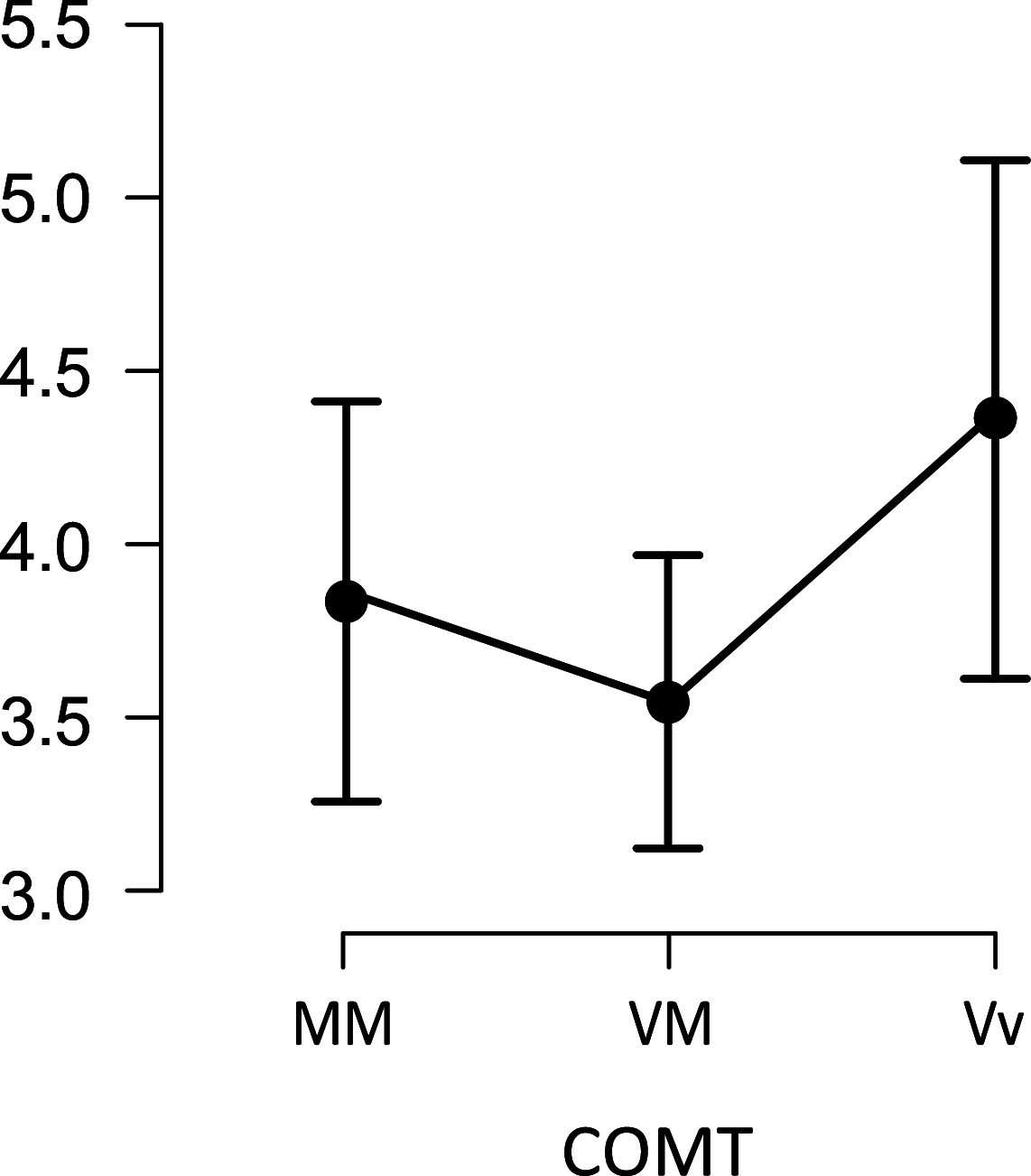Recognition of Emotional and Neutral Visual Scenes in Carriers of the MAOA, COMT, DRD4, and 5HT2A Gene Polymorphisms
- PMID: 36761718
- PMCID: PMC9903230
- DOI: 10.11621/pir.2022.0410
Recognition of Emotional and Neutral Visual Scenes in Carriers of the MAOA, COMT, DRD4, and 5HT2A Gene Polymorphisms
Abstract
Background: It is known that some genes regulate neurochemical metabolism, and their polymorphisms affect cognitive performance, including the ability to categorize emotionally significant information.
Objective: The aim of our study was to analyze the recognition of emotional and neutral visual scenes in carriers of different polymorphic variants of the MAOA, COMT, DRD4, and 5HT2A genes.
Design: The study sample consisted of 87 university students (Caucasians, women 63%, average age 20.4±2.6 years). The genotypes of the COMT, 5HT2A, and DRD4 genes were determined by polymerase chain reaction. Agarose gel electrophoresis was used to determine the number of tandem repeats of the MAOA gene. Three hundred sixty (360) photographic images of scenes of different emotional valence (positive, negative, and neutral - 120 images for each category) were used as stimuli. These images were classified by expert assessments. The images were presented in a random sequence. The exposure time was 700 ms. The research participants were asked to determine the emotional valence of each scene.
Results: We found that only the COMT gene genotype affected the recognition of emotional and neutral visual scenes. Carriers of the COMT Val/Val genotype, which causes dopamine to stay in the synaptic space for a shorter time, are better in recognizing and demonstrate higher sensitivity to the emotional content of scenes. Carriers of the Val/Met genotype demonstrated the worst ability to differentiate the emotional valence of visual scenes.
Conclusion: This study has shown that the length of stay of monoamines in the synaptic space regulated by the COMT gene affects the recognition of emotional visual information.
Keywords: 5HT2A genes; COMT; DRD4; MAOA; Visual scene recognition.
© Lomonosov Moscow State University, 2022© Russian Psychological Society, 2022.
Conflict of interest statement
The authors declare no conflict of interest.
Figures
Similar articles
-
Association between categorization of emotionally-charged and neutral visual scenes and parameters of event-related potentials in carriers of different COMT, HTR2A, BDNF gene genotypes.F1000Res. 2020 May 26;9:446. doi: 10.12688/f1000research.22503.2. eCollection 2020. F1000Res. 2020. PMID: 32983417 Free PMC article.
-
Gene-gene interaction between COMT and MAOA potentially predicts the intelligence of attention-deficit hyperactivity disorder boys in China.Behav Genet. 2010 May;40(3):357-65. doi: 10.1007/s10519-009-9314-8. Epub 2009 Nov 26. Behav Genet. 2010. PMID: 19941049
-
Association of DRD4 and COMT polymorphisms with disgust sensitivity in healthy volunteers.Neuropsychobiology. 2010;61(2):105-12. doi: 10.1159/000275822. Epub 2010 Jan 16. Neuropsychobiology. 2010. PMID: 20090380
-
Which Dopamine Polymorphisms Are Functional? Systematic Review and Meta-analysis of COMT, DAT, DBH, DDC, DRD1-5, MAOA, MAOB, TH, VMAT1, and VMAT2.Biol Psychiatry. 2019 Oct 15;86(8):608-620. doi: 10.1016/j.biopsych.2019.05.014. Epub 2019 May 28. Biol Psychiatry. 2019. PMID: 31303260
-
Catechol-O-methyltransferase, dopamine, and sleep-wake regulation.Sleep Med Rev. 2015 Aug;22:47-53. doi: 10.1016/j.smrv.2014.10.006. Epub 2014 Oct 27. Sleep Med Rev. 2015. PMID: 25466290 Review.
References
-
- Barnett, J.H., Xu, K., Heron, J., Goldman, D., & Jones, P.B. (2011). Cognitive effects of genetic variation in monoamine neurotransmitter systems: a population-based study of COMT, MAOA and 5HTTLPR. American Journal of Medical Genetics. Part B: Neuropsychiatric Genetics, 156, 158–167. 10.1002/ajmg.b.31150 - DOI - PMC - PubMed
-
- Cavill, R. (2017). Apolipoprotein e4 Influences on Scene Representation in Young Adults. A thesis submitted for the degree of Doctor of Philosophy, School of Psychology, Cardiff University.
-
- Cervantes-Henriquez, M.L., Acosta-López, J.E., Ahmad, M., Sánchez-Rojas, M., Jiménez-Figueroa, G., Pineda-Alhucema, W. … Vélez, J.I. (2021). ADGRL3, FGF1 and DRD4: Linkage and Association with Working Memory and Perceptual Organization Candidate Endophenotypes in ADHD. Brain Science, 11(7), 854. 10.3390/brainsci11070854 - DOI - PMC - PubMed
LinkOut - more resources
Full Text Sources
Miscellaneous


